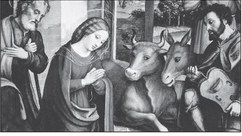BE OUR GUEST


By Chris Hardie Wisconsin Newspaper Association
Christmas and farm animals just belong together
It was Christmas Eve more than...


By Chris Hardie Wisconsin Newspaper Association
Christmas and farm animals just belong together
It was Christmas Eve more than...